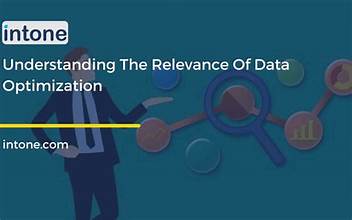Matthew Benner Processing Point: Understanding Its Impact and Relevance

The Matthew Benner Procesing Point is a term that has gained attention for its significant role in the context of data processing and organizational efficiency. In this article, we will delve into the meaning of the Matthew Benner Procesing Point, explore its applications, and understand how it plays a crucial role in optimizing processes within businesses and technological systems. As we progress, we will discuss how this concept contributes to various industries and why it’s important for professionals in the field of data management and processing.
Table of Contents
What is the Matthew Benner Processing Point?
The Matthew Benner Processing Point refers to a specific moment or location within a system where data processing reaches a pivotal stage. It is a concept used in data management, specifically related to how and when data or tasks within a workflow are processed and optimized for further use. This “processing point” is not merely a theoretical stage, but a practical one that has real-world implications in streamlining operations and improving the efficiency of organizations.
It’s important to note that the term was coined by Matthew Benner, a thought leader in the field of data processing, who identified the need for businesses to focus on specific stages of their data handling process in order to improve overall performance and decision-making.
How the Matthew Benner Processing Point Transforms Workflow Efficiency
At its core, the Matthew Benner Processing Point can act as a checkpoint within a complex workflow. In many organizations, workflows consist of several steps that handle large amounts of data or information. The processing point marks the stage where the data is either processed, filtered, or optimized before moving to the next phase.
When a company implements the Matthew Benner Processing Point concept effectively, it ensures that each task or piece of information is not only processed at the right time but is also processed with the utmost accuracy and speed. This is particularly beneficial in industries where data must be handled in real time, such as in financial services, healthcare, and e-commerce.
The Role of the Matthew Benner Processing Point in Data Optimization

The concept of the Matthew Benner Processing Point is central to optimizing data flow. Whether the data is moving from one system to another, or from one department to another within an organization, understanding when and how it is processed can make a significant difference in both time and cost.
For example, imagine a financial institution where transactions are processed in batches throughout the day. By implementing the Matthew Benner Processing Point, the institution can strategically time these processing points to ensure that no delay in processing negatively impacts the overall system.
This optimization ensures that decision-makers have real-time or near-real-time data at their disposal, which is crucial for businesses that rely on timely and accurate information to drive their operations.
How Businesses Can Benefit from Implementing the Matthew Benner Processing Point
By implementing the Matthew Benner Processing Point within their organizational processes, businesses can reap a variety of benefits. These include:
- Faster Decision Making: With the efficient handling of data, decision-makers can make informed choices more rapidly, which is especially important in fast-paced industries.
- Improved Productivity: When data is processed at the right points, employees can spend less time waiting for information and more time focusing on their core tasks.
- Cost Savings: Optimizing data flow and processing ensures that businesses are not wasting resources on unnecessary steps or redundant processes.
- Enhanced Customer Satisfaction: Faster and more accurate data processing can lead to quicker responses to customer needs, which directly translates into higher satisfaction and loyalty.
- Scalability: With optimized processes, businesses can handle larger volumes of data as they grow, without a proportional increase in overhead costs.
Applications of the Matthew Benner Processing Point Across Industries

The Matthew Benner Processing Point is versatile and can be applied across various industries. Let’s explore some real-world examples of how this concept is used to improve operations.
1. Financial Sector
In the financial industry, where accuracy and timing are crucial, the Matthew Benner Processing Point can be implemented to streamline the processing of transactions and financial data. Banks and investment firms can use it to ensure that trades and transfers are executed efficiently and in compliance with regulations.
By focusing on key processing points in their systems, these institutions can prevent bottlenecks and delays that could lead to lost opportunities or financial discrepancies.
2. Healthcare
Healthcare is another sector where the Matthew Benner Processing Point is vital. Hospitals and clinics handle vast amounts of sensitive patient data, including medical records, test results, and billing information. Efficient data processing at the right point in the system can ensure that patient care is not delayed, while also keeping administrative costs in check.
For instance, if medical data is processed and analyzed at the right Matthew Benner Processing Point, doctors can have access to real-time results and make decisions faster, which can be a matter of life and death in critical situations.
3. E-Commerce
In e-commerce, customer orders are processed at various points throughout the system, from when the order is placed to when it is shipped. Implementing the Matthew Benner Processing Point ensures that inventory, shipping, and payment systems are optimized for maximum efficiency.
This not only helps improve the customer experience but also reduces the risk of errors and miscommunication that can lead to delays or inventory shortages.
Key Challenges of Implementing the Matthew Benner Processing Point
While the benefits of adopting the Matthew Benner Processing Point are numerous, organizations may face some challenges when trying to implement it. Here are some potential obstacles:
- System Complexity: Integrating the Matthew Benner Processing Point into existing systems can be challenging, especially if the current infrastructure is outdated or fragmented.
- Data Security: Handling sensitive data at critical processing points requires strong security measures to prevent breaches and protect customer privacy.
- Employee Training: Employees must be trained to understand how and when to use the Matthew Benner Processing Point effectively, which can require an initial investment of time and resources.
- Costs of Transition: Transitioning to a new system that incorporates the Matthew Benner Processing Point could involve substantial upfront costs, including software upgrades and system integration.
Future Trends: The Evolution of the Matthew Benner Processing Point
As businesses continue to evolve and technologies advance, the concept of the Matthew Benner Processing Point will likely become even more sophisticated. Automation, artificial intelligence (AI), and machine learning are all shaping the future of data processing, and the Matthew Benner Processing Point will play a key role in these advancements.
For example, AI-powered systems could help identify the most efficient processing points in real-time, continuously optimizing the flow of data. This could lead to even more streamlined operations and further reduce the human effort required to manage complex workflows.
Also read 63.223.29.66: Understanding Its Significance and Usage in Networking
Conclusion: The Importance of the Matthew Benner Processing Point
In conclusion, the Matthew Benner Processing Point is a crucial concept in modern data management and workflow optimization. By identifying key processing stages within a system, organizations can enhance efficiency, improve decision-making, and ultimately achieve better outcomes. Whether in finance, healthcare, e-commerce, or other industries, businesses that implement this concept effectively can gain a competitive edge and ensure smoother operations.
As industries continue to evolve, the Matthew Benner Processing Point will remain an essential tool for organizations looking to adapt and thrive in an increasingly data-driven world.




